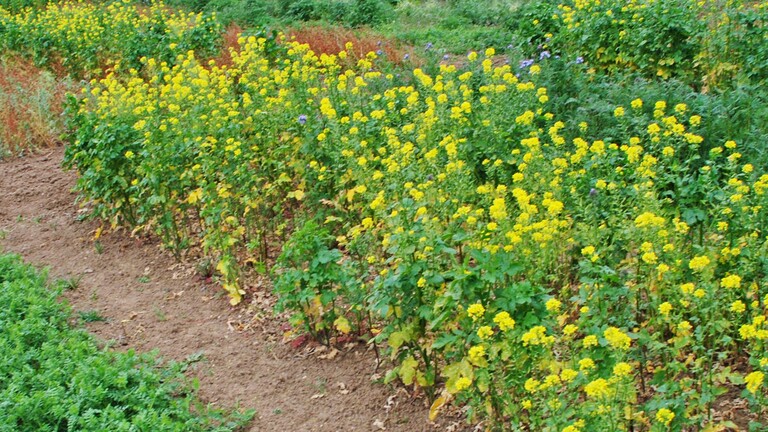Since 2015, catch crops have been one of the ways fulfilling the function of greening. Greening is one of the conditions for receiving direct payments. To meet the conditions of greening, farmers choose from a wide range of EFA areas (Ecological Focus Area). When choosing an area with catch crops, the seeding of a mix of catch crops is required.
The list of recommended catch crops includes a whole range of species that have various biological properties. Some species from the list have been tested at the Field Test Station in Žabčice from 2006 to 2018. Our results in dry conditions show that it is suitable to choose white mustard, common garden radish, lacy phacelia, common buckwheat, field pea, or the less known crambe abyssinica.
 In the last two years, catch crops have been sown sooner, at the end of July. This year, when there was basically no precipitation in August, with some rain in September, the biomass production of lacy phacelia, white mustard and common buckwheat was more than 3 tonnes per hectare, dry. In Žabčice, we are now testing mixtures of the catch crops. The biological particularities of the individual species of catch crops are important for the efficiency of catch crop growing, above all their growth dynamics, which is important for determining the seeding amount of various catch crop species in the mix.
In the last two years, catch crops have been sown sooner, at the end of July. This year, when there was basically no precipitation in August, with some rain in September, the biomass production of lacy phacelia, white mustard and common buckwheat was more than 3 tonnes per hectare, dry. In Žabčice, we are now testing mixtures of the catch crops. The biological particularities of the individual species of catch crops are important for the efficiency of catch crop growing, above all their growth dynamics, which is important for determining the seeding amount of various catch crop species in the mix.
Another condition is the time deadlines for catch crop maintenance stipulated by the legislation. The summer variant is sown no later than on 31st July and it is left in the field until 24th September. The winter variant is sown by 6th September and has to stay in the field until 31st October. When a mid-September date is selected for seeding, compared to mid-August, the yield of the dry matter of catch crop reduces from 66 to 90 % in relation to the type of the catch crop. Other monitored catch crops – tuft rye, common millet, fodder mallow, Canary grass and safflower are less suitable for dry conditions due to the low biomass production. Therefore, they cannot effectively fulfil the main objectives of growing catch crop – to enrich the soil with organic mass, and to improve the soil conditions and reduce erosion.
Brno, 5th November 2018
Ing. Martina Handlířová
Department of Agrosystems and Bioclimatology
Mendel University in Brno
